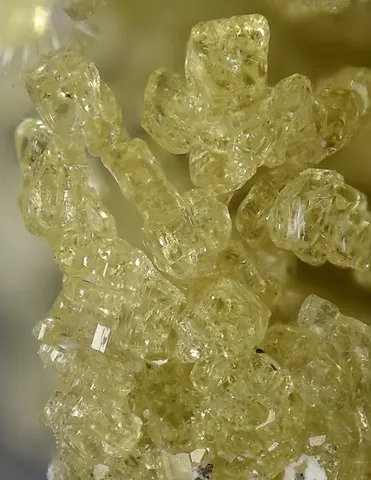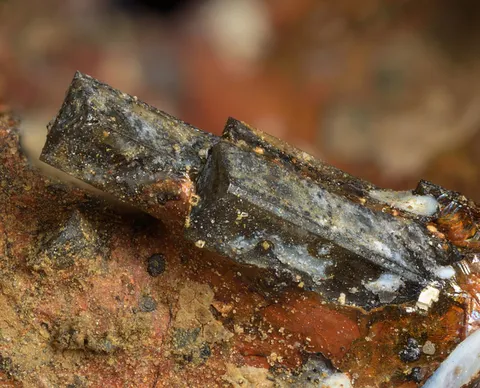AKERMANITE
Class : Silicates
Subclass : Sorosilicates
Crystal System : Tetragonal
Chemistry : CaMgSiO7
Rarity : Rare
Akermanite is isomorphic to gehlenite, with which it forms a continuous series and whose deposits it often shares. It is the Swedish metallurgist Anders Âkerman who gave it its name. This calcium silicate is a carbonate rock mineral found in basic volcanic rocks rich in calcium, limestone and dolomites transformed by thermal metamorphism, and certain calcic alkaline rocks. Akermanite also crystallizes in abundance in foundry and incinerator furnaces and is therefore an essential constituent of metallurgical slag and incineration bottom ash. It occurs as short prismatic to thin tabular crystals, or in masses ; it is colorless, yellowish-gray, dark green to dark brown. Artificial crystals from foundries and incinerators have acicular to bacillary habits, very different from those of natural crystals. Photo © Stephan Wolfsried - Natural Akermanite from Caspar quarry xenoliths, Bellerberg, Germany
Akermanite in the World
Twinning
Twin are known on {100} and 001, sometimes cruciform.
Fakes and treatments
No fake reported for this mineral species.
Hardness : to 6
Density : 2.94
Fracture : Irregular to conchoidal
Trace : White
TP : Translucent to transparent
RI : 1.632 to 1.640
Birefringence : 0.008
Optical character : Uniaxial +
Pleochroism : None
Fluorescence : None
Solubility : Hydrochloric acid
Magnetism : None
Radioactivity : None


